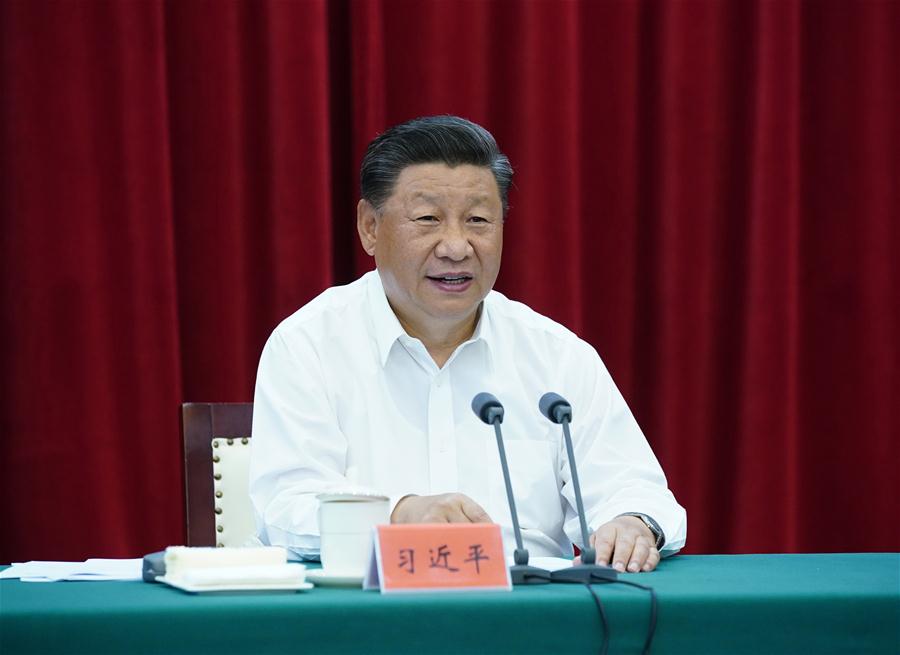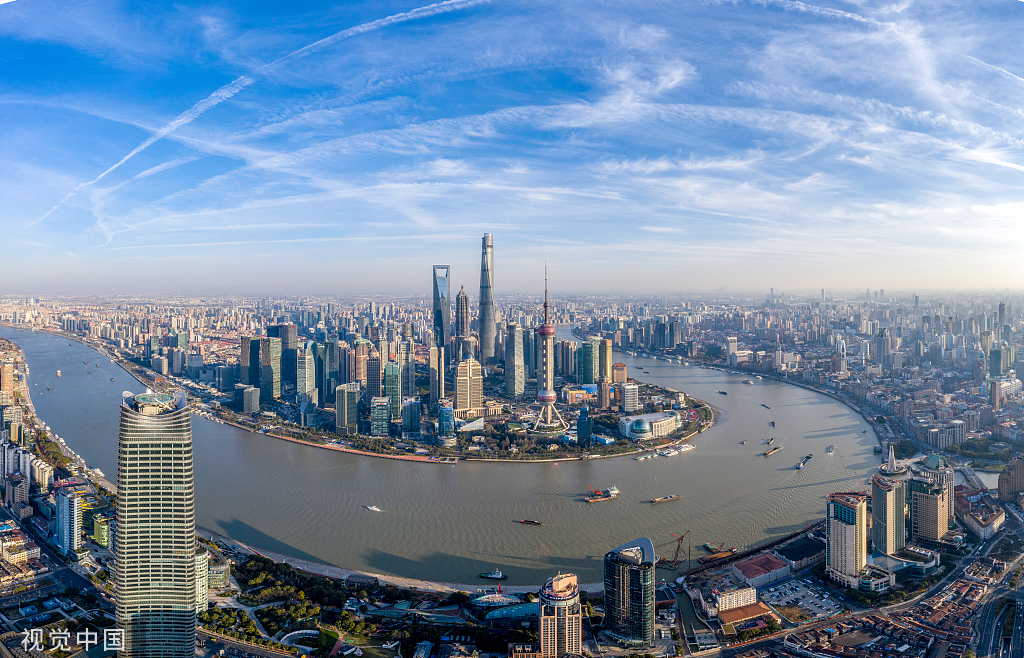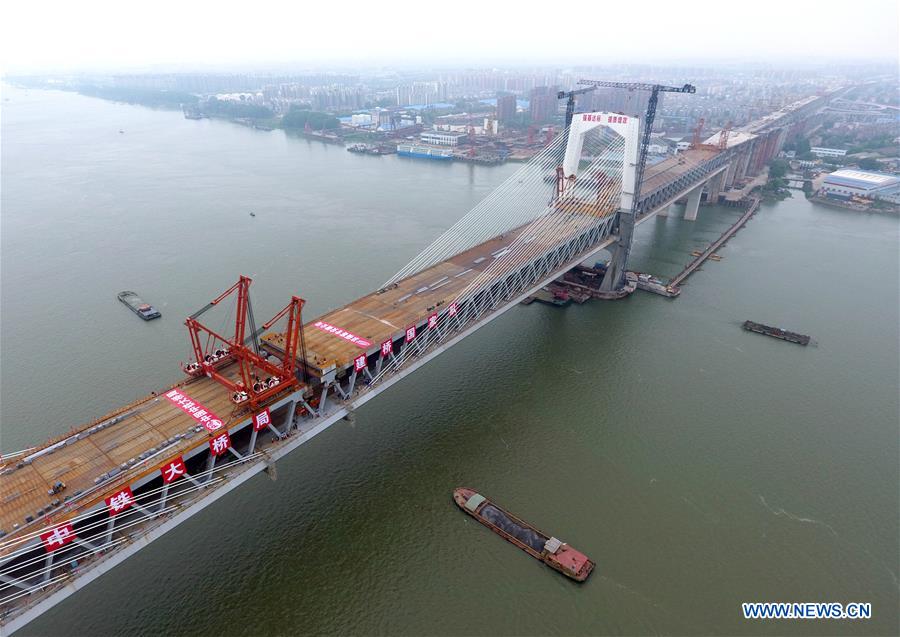As one of China's most economically active, open, and innovative regions, the Yangtze River Delta region has created nearly a quarter of China’s total economic output with 4 percent of the country's land area and less than 10 percent of the population.

President Xi Jinping chairs a symposium on advancing integrated development of the Yangtze River Delta in Hefei, East China's Anhui Province, Aug. 20, 2020. (Photo: Xinhua)
At a symposium held in Hefei, capital city of East China's Anhui Province on August 20, Chinese President Xi Jinping stressed efforts to seek continuous results in the integration of the delta through focusing on integrated and high-quality development.
“Amid grave and complex circumstances, we must have a deeper understanding of the delta's status and function in China's economic and social development,” Xi said.

An aerial view of Shanghai. (Photo: VCG)
The integration mechanism and interconnected infrastructure have played a role in epidemic prevention and control as well as economic recovery, he noted.
Xi recalled, “I had thought deeply about how to actively promote the development of the Yangtze River Delta.”
At that time, the trend of Shanghai-Jiangsu-Zhejiang integration was becoming clear, and the first Yangtze River Delta development meeting was hosted by Zhejiang Province, where Xi worked as the Party chief from 2002 to 2007.
The neighboring province of Anhui also observed the meeting. “We were auditors at that time,” a senior official from Anhui said while attending the symposium Xi chaired last week.
According to the official development plan, the Yangtze River Delta now consists of Shanghai Municipality and the provinces of Jiangsu, Zhejiang and Anhui.
Amid laughter, Xi said, “The main consideration was to offer Anhui a push. For Anhui, it is just like farming. [Joining in the delta zone] resembles an improvement in soil and moisture. With high quality seeds, the crops grow well."

Train G7147, a Fuxing bullet train which travels from Wuhu, Anhui Province, to Shanghai, pulls into Wuxi Railway Station in Wuxi, East China's Jiangsu Province, Nov. 20, 2017. (Photo: Xinhua)
At the first China International Import Expo held in Shanghai in 2018, Xi announced the integrated development of the Yangtze River Delta as a national strategy. A year later, an outline for the delta’s development was issued.
This symposium opened another "acceleration" of the integrated development of the delta.
The Yangtze River Delta region made great achievements in this year’s second quarter. The regional GDP grew by 0.2 percent from a decline of 5.7 percent in the first quarter, and its economy accounted for 24.2 percent of the national economy, an increase from 23.9 percent at the end of last year.

In this aerial photo taken on April 26, 2019, workers finish joining together the steel structures of a rail-road bridge of the Shangqiu-Hefei-Hangzhou high-speed railway over the Yangtze River in Wuhu, East China's Anhui Province. (Photo: Xinhua)
When a leader from Shanghai Municipal spoke at the symposium, Xi asked, "How are the preparations for the Import Expo going?"
"There is 60,000 square meters more area for booths for enterprises than last year. Despite of the impact of the COVID-19 pandemic, no one is willing to give up the big market of China," the leader said.
At the symposium, officials from Jiangsu, Zhejiang and Anhui also reported the continued growth of imports and exports and foreign investment. They shared a common feeling that foreign countries are optimistic about the Yangtze River Delta and China's economic development.
(Translated by Long Wei, edited by Huang Jingjing)


